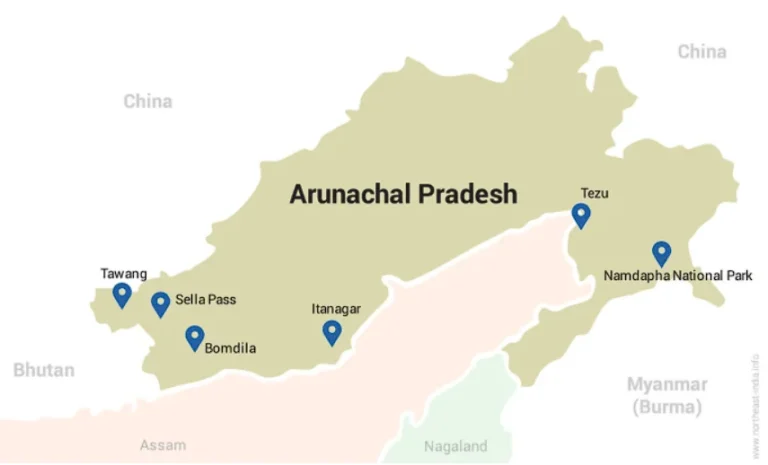Origin of Civilization
River valley civilizations and Bronze Age civilization had some common characteristics. The gradual development of these civilizations can be understood as follows –
Beginning of Metallic Age
In the Stone Age, humans used to make weapons and tools from stones. Such weapons could not be sharpened because stone is not flexible. Therefore, people started searching for soft and flexible metals. Copper was invented around 5,000 BC. From that time, the Metal Age began in the history of human civilization.
Copper is more malleable than other metals. Therefore, it was easily bent or beaten to make knives, axes, daggers, spears and other weapons. For a long time, copper tools were used along with stone tools in some parts of the world. The age in which humans used stone and copper tools together is called the Copper-Stone Age.
Initially, man was not aware of copper ores which are extracted from mines. He used to use only the natural copper deposited from the banks of rivers. Later he learnt to extract ore copper from mines.
In ancient times, people in Bihar used tools made of copper obtained from copper mines of Hazaribagh and Singhbhum districts. Many copper weapons have been found in some areas of Madhya Pradesh, South Bihar etc. Copper was the first metal to be used. That is why Hindus consider it sacred. Copper utensils are still used in religious functions.
Copper Age
The period from about 5,000 BC to 2,000 BC is called the Copper Age. The use of copper started in Sumer in the south around 5,000 BC. After that it became popular in Asia, Africa and Europe. With the use of copper, human civilization moved towards a new direction. Copper is more malleable than other metals. Hence, man started bending it easily to make axes, knives, axes and other tools.
Bronze Age
The Bronze Age came after the Copper Age. Over time, people started making an alloy called Bronze by mixing tin or zinc with copper. Bronze is harder than copper. Therefore, bronze weapons and tools proved to be more useful. The tools and weapons made of bronze were strong, beautiful and sharp.
The use of bronze tools and hammers helped in the development of carpentry. As a result of this, the wheel was invented. Due to the importance of bronze in the development of the first civilizations, the period of the first civilizations is called the Bronze Age and these civilizations are called Bronze Age civilizations.
Bronze Age and Beginning of Civilization
The use of bronze brought about significant changes in human life and the social relations of human life became more extensive. Wherever bronze tools and weapons started being used, progress began to be made in economic, social, political and cultural fields. Due to the development in trade, there was progress in economic fields. As a result, the question of property became complex and rules, laws etc. were needed to protect it. Then, due to the complexity of life in cities, an organization was needed to regulate public life. As a result, over time, rulers and kings emerged in society, which we today call government.
Gradually, groups of people adopted different professions. Some people acquired expertise in special crafts. As a result, division of labor began. Writing was invented to accumulate human experience. Similarly, currency was also invented to facilitate transactions. In this way, about 4,000 years ago, another revolution took place which is called the urban revolution.
River Valley Civilizations
The metal age civilization developed mainly in the river valleys, which is called river valley civilization. Excavation of old ruins shows that there were four major centers of river valley civilizations –
- Egyptian civilization in the valley of the Nile River,
- Mesopotamian civilization in the valley of the Tigris-Euphrates,
- Indian civilization in the valley of the Indus River and
- Chinese civilization in the valley of the Huanghua River.
Sources of study
- The main sources of information about river valley civilizations are archaeology, literature and indigenous resources.
- Archaeological excavations have played a major role in throwing light on the ancient civilization and culture of India, Egypt, Mesopotamia and China. Inscriptions, amulets, monuments, coins etc. have been found in the excavations, the study of which gives information about the history of ancient times.
- Herodotus (480-430 BC) was a famous historian of Greece. Along with the Persian wars, he has also described the civilization and culture of ancient Egypt, Babylon, Syria etc. This gives a glimpse of the ancient history of those countries.
- Similarly, the works of historians like Thucydides, Polybius, Xenophon etc. also provide information about the civilizations of that time.
- The history of the kings of ancient Egypt up to the fifth dynasty is available in the archives of ancient Egypt.
- The works of historians of Babylon, Assyria etc. are also important.
Causes of Development of Ancient Civilizations in River Valleys
The following are the reasons for the rise and development of ancient civilizations of the world in the valleys of rivers –
- Fertility of land – When man invented agriculture in the Neolithic Age, he started looking for fertile land. Such land was available in the foothills of rivers. Hence man started settling in such places.
- Facility of animal husbandry – Along with agriculture, man started animal husbandry. There were adequate facilities for animal husbandry in river areas. There was no shortage of grass for cattle and they could get water to drink in every season.
- Facility of irrigation – Arrangement of irrigation could be easily done in the land along the river banks. There was a possibility of farming even if there was no rain.
- Suitable climate – The climate of river valleys is usually temperate. In such a climate, man can easily do hard work. This climate was also beneficial for health.
- Availability of metals – The use of metals is essential for the development of civilization. The foundation of civilization is built on this. There were mines of copper, iron, tin etc. in the valleys of rivers.
- Facility of house-building – The Facility of house-building was also available in the valleys of rivers. Soft soil was available on the banks of rivers from which bricks could be made. There was no shortage of sand either.
- Facility of Transportation – One important reason for settling on the banks of rivers was that in that era, means of transport were not available. The boat had been invented. At that time, this was the only convenient means for long distance travel. Travel could be done by boat and heavy goods could also be carried from one place to another.
Similar Features of River Valley Civilizations
Following were some similar features of river valley civilizations –
- Improvement in agriculture and production of more food grains – Means of farming developed in every river valley civilization. Arrangement of irrigation was made. As a result, more food grains started being produced.
- Urban revolution or rise of cities – Till the Stone Age, only villages had developed, cities were not built. But in the Metal Age i.e. the period of river valley civilizations, man made progress in every field. Food grains started being produced in large quantities in villages. Then many people got free from the work of food production and went to cities and started other professions. In this way cities developed.
- Rise of governance – When the people of cities got involved in different professions, their interests were not the same. In other words, city life became complex. Now an organization was born for the regulation of public life. The responsibility of this institution or organisation included maintaining the systems, making laws and looking after the affairs of the city. Over time, governments emerged in the society.
- Development of trade – The villagers started producing more food than required and started giving it to the people of the city. In return, the people of the city also had to give something. Thus, buying and selling, i.e. trade, was born. Initially, there was exchange of goods. Later, currency started being used.
- Writing art – Before the river valley civilizations, people did not know the art of writing. During this period, the art of writing developed in all the civilizations in their own way.
Contribution of River Valley Civilizations in the Development of Human Civilizations
River valley civilizations made important contributions in the development of human civilization. These are as follows –
- Expansion of social life – Social life expanded in river valley civilizations. This was organized in the form of family, village, city etc.
- Development of industry and trade – With the development of agricultural means, more amount of food grains started being produced. As a result, trade developed and various types of industries were established. International trade first started in river valley civilizations.
- Development of writing – Writing, script, literature and knowledge-science were first developed in river valley civilizations.
- Rise of governance – States, governments and administrations first emerged in river valley civilizations for the regulation of social life.
- Division of labour– Cities emerged and developed in river valley civilizations and due to the development of cities, division of labour took place. The people of the cities did not produce grains. Therefore, they adopted some other professions. As a result, traders, craftsmen, soldiers etc. emerged in the society. These people used to concentrate their entire attention on one profession. This was the beginning of division of labour.


